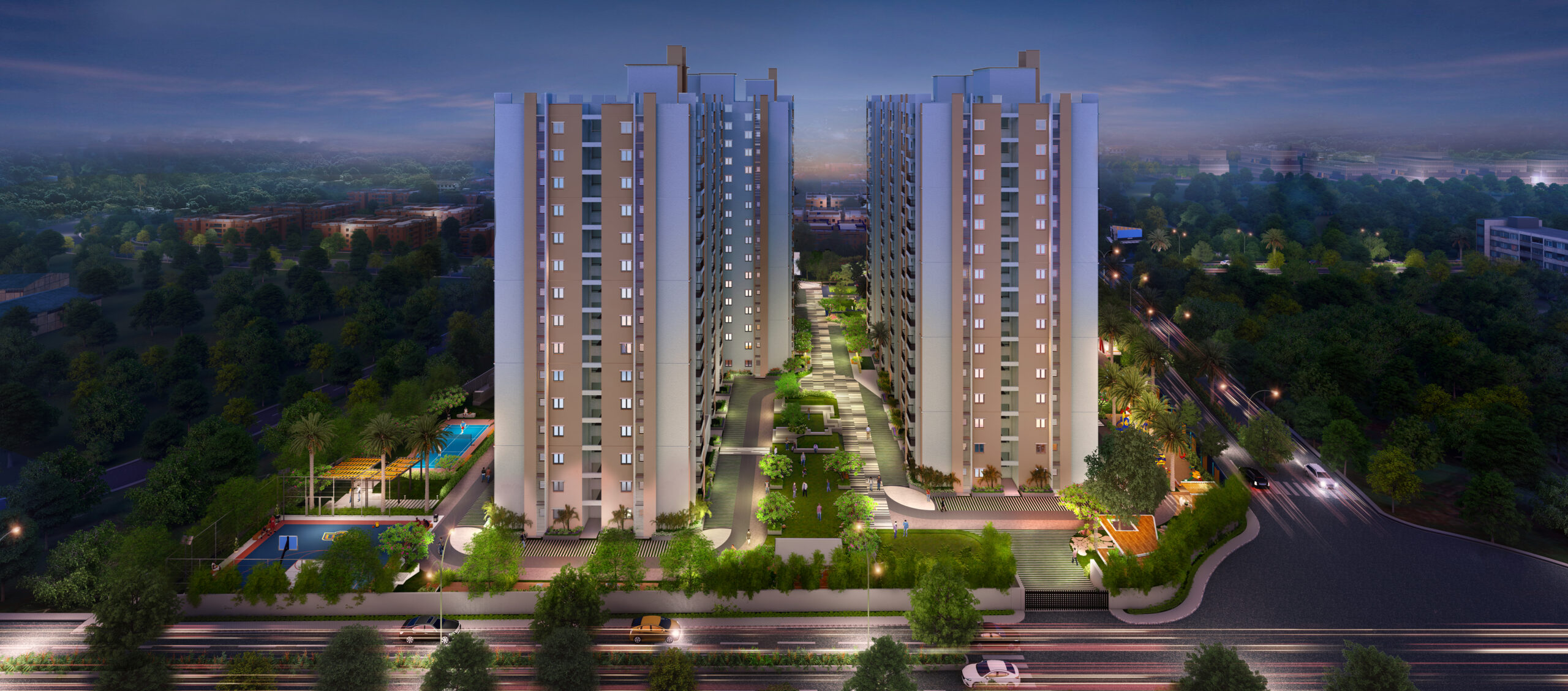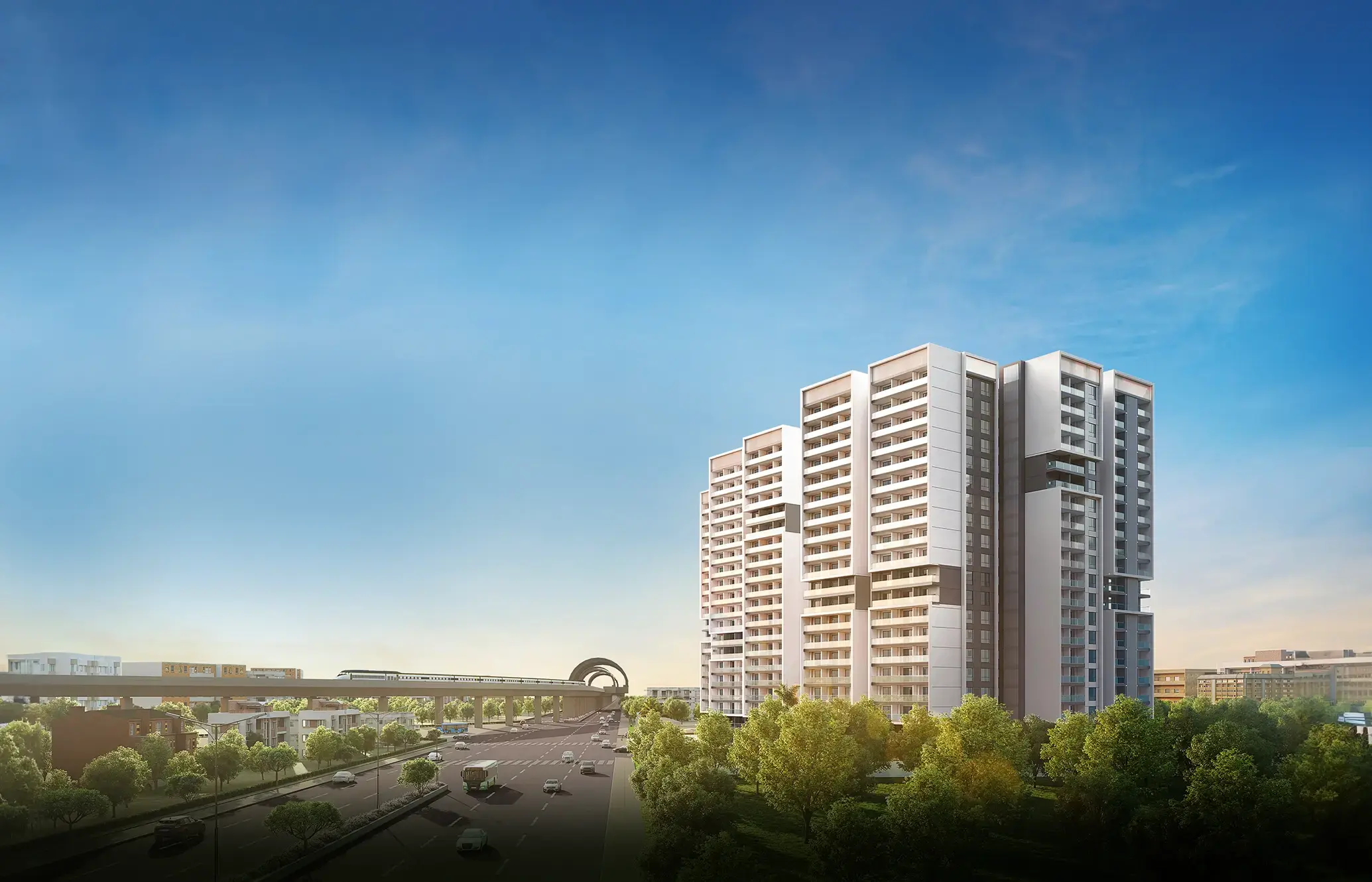Floor Space Index Rules in Hyderabad: The Complete Guide
Understanding Floor Space Index (FSI) and Its Role in Urban Development
So, what’s the deal with Floor Space Index (FSI)? It’s really all about the math, the ratio of a building’s total floor area to the plot it sits on. Basically, a higher FSI equals more space to build. In the bustling city of Hyderabad, FSI is a game changer for urban planning. It’s the key to controlling how tall buildings can go and how densely areas are developed.
Let’s break it down. Picture this: you’ve got a 1,000-square-meter plot with an FSI of 2.0. That means you can construct up to 2,000 square meters of floor area. Knowing how to crunch these numbers? Absolutely essential for anyone eyeing real estate.
Here’s a quick look at how different FSI ratios change the game:
| FSI Ratio | Max Buildable Area (in sqm) | Implication |
|---|---|---|
| 1.0 | 1,000 | Good for low-density housing. |
| 2.0 | 2,000 | Mix of residential and commercial. |
| 3.0 | 3,000 | Perfect for high-rise offices. |
FSI isn’t just a number. It affects real estate prices, where to put your money and even how a city looks and feels. Developers watch these changes closely; hints of a rising FSI can signal the best times for jumping into new projects.
For further details on how floor space index shapes real estate in India, check out resources like What is Floor Space Index?, Floor Space Index: Meaning and Calculation, and Floor Space Index: Importance in Real Estate. You can also learn about navigating urban planning’s ever-evolving landscape here and grasp the implications of real estate metrics here.
Historical Context of FSI Regulations in Hyderabad
FSI isn’t just numbers in a vacuum. It’s a crucial part of how Hyderabad manages its growth. The evolution of FSI regulations here has been shaped by a multitude of factors.
Let’s look at a few:
1. Urbanization: The early 2000s saw rapid urban growth. The government had to rethink FSI measures to keep the balance between development and sustainability.
2. Infrastructure Boom: Big projects like the Outer Ring Road? They’ve changed the game by improving access and boosting commercial activity.
3. Environmental Awareness: With new developments, how they impact the environment has come under the microscope, leading to FSI changes.
4. Market Trends: The health of the real estate market informs FSI adjustments. As demand shifts, so do regulations.
Here’s a snapshot of how FSI values have changed in Hyderabad over the years:
| Year | FSI Value | Notable Changes |
|---|---|---|
| 1990 | 1.0 | Initial setup for urban growth |
| 2006 | 1.5 | Gained traction with a growing population |
| 2012 | 2.0 | Higher limits for transit-oriented areas |
| 2017 | 2.5 | Adjustments for sustainable developments |
| 2022 | 3.0 | Regulations to encourage vertical expansion |
Rising FSI values mean those sky-high buildings we see now. It allows for urban growth and helps manage housing demands sensibly.
For more insights into FSI, resources like The Constructor, Rustomjee, and Law Insider are worth the read. Explore related topics through articles discussing the expansion of Hyderabad’s landscape with our insights on the Ring Road Project or the 2031 Master Plan.
Recent Changes in FSI: A Legal Perspective
There have been some pretty significant shifts in FSI regulations in Hyderabad lately, aimed at making urban development smoother for developers. Getting a grip on these changes? Critical for ensuring everything stays compliant.
What is Floor Space Index?
So, FSI is the ratio of a building’s total area to the land area. This means it determines how much you can actually build on a plot. More FSI, more potential.
FSI Calculation and Its Implications
To figure FSI, you use this formula: FSI = Total Floor Area / Plot Area. Say you have a 1,000 sq.m plot and build up to 2,000 sq.m, you end up with an FSI of 2. This flexibility helps developers while sticking to local laws.
Here’s how some numbers shake out:
| Plot Area (sq.m) | Total Floor Area (sq.m) | FSI |
|---|---|---|
| 500 | 750 | 1.5 |
| 1000 | 2000 | 2.0 |
| 2000 | 3000 | 1.5 |
Legal Processes for FSI Changes
The way developers adjust FSI values has changed too. Now, they need to submit plans to local authorities, along with environmental assessments. These steps ensure that new developments fit urban planning and sustainability goals.
Remember, FSI holds a lot of meaning, it’s about more than square meters; it’s about steering urban growth effectively. For a deeper dive into its practical sides, the piece ‘FSI Decoded’ is a must-check, and if you need a legal viewpoint, find it here.
For developers, being on top of these updates is vital. Documents like What is Floor Space Index (FSI)? can clear up any uncertainties.
And for more info on how FSI influences real estate, don’t miss this article about building specifications and the relationship between FSI and market trends.
Implications for Developers and Investors
Keeping up with FSI changes in Hyderabad is crucial for real estate developers and investors. The FSI basically tells you how much you can build on a plot. With recent changes, development opportunities can look pretty different now.
Current FSI Regulations in Hyderabad
Check out this table summarizing the latest FSI regulations in various zones:
| Zone | Current FSI | Previous FSI | Comments |
|---|---|---|---|
| Residential Areas | 2.00 | 1.50 | More housing density allowed |
| Commercial Areas | 3.00 | 2.50 | Boosts office space possibilities |
| Mixed-Use Areas | 2.50 | 2.00 | Encourages sustainable growth |
With the increase in FSI, developers can tap into their construction potential more than before. Higher FSI equates to better returns, which makes projects a lot more appealing to investors. However, complying with codes and local regulations? That still hangs over their heads.
Opportunities Ahead
So, there are exciting possibilities for investors focusing on:
– High-Density Housing: The jump in FSI allows for a bigger push on residential units, essential for a growing city like Hyderabad.
– Commercial Projects: Flexibility in commercial zones means better profit potential for office and retail developers.
– Gated Communities: With more people wanting managed living spaces, the higher FSI can really help builders create appealing communities packed with amenities.
Potential Challenges
But it’s not all smooth sailing. Challenges include:
– Market Competition: More builders in the ring could spark price wars and eat into profits.
– Infrastructure Strains: More buildings can stretch existing infrastructure, leading to future costs for developers.
– Regulatory Compliance: New rules along with increased density? That can make getting project approvals more complex.
For a deeper dive into how FSI changes impact real estate, check out articles like What is Floor Space Index (FSI)? and FSI in Construction: Meaning and Calculation.
Further insights can be found in our discussions about the Ring Road Project and the impact of TS BPASS on real estate.
Future Trends and Considerations for FSI in Hyderabad
Understanding Floor Space Index (FSI)
Grasping what FSI means is crucial for understanding urban planning in Hyderabad. Right now, FSI influences building density and guides developers on how much they can construct relative to their land. As cities evolve, local authorities often tweak FSI rules to support development in a balanced way.
Here’s how FSI has shifted:
| Year | FSI Value | Area of Impact |
|---|---|---|
| 2015 | 1.5 | Outer City Areas |
| 2019 | 2.0 | City Center |
| 2023 | 2.5 | Expansion Zones |
The trend of increasing FSI values hints at a focus on higher building density, especially as population and urban sprawl grow. Future talks about urban design may also encompass adaptable FSI adjustments reflecting changing needs.
Potential Policy Changes on the Horizon
Move over to future policy speculations, tightening FSI limits in core urban areas might be coming, aimed at preserving quality of life. Regulations could shift toward greener practices and improved sustainability. Thus, floor space index won’t just be about building more; it’ll be about living better and reducing environmental footprints.
Staying ahead of potential FSI policy shifts will be key for builders and investors. If regulations change, expect a push for more collaboration between developers and city planners to maintain eco-friendliness and urban aesthetics.
To keep up with future FSI updates, it’s smart to stay in touch with real estate associations and join municipal meetings. Local reports can offer valuable foresight into what’s to come.
For more on Floor Space Index and its impacts, you might want to check out:
– What is Floor Space Index (FSI)? – The Constructor
– FSI in Construction: Meaning – Polaris World
– Floor Space Index (FSI) Definition – Law Insider
And for more related reads, check out our insights on Hyderabad’s flyovers or delve into the effect of the TS BPASS reforms.
FAQ
- What is FSI? Floor Space Index (FSI) is the ratio of a building’s total floor area to the area of the plot it’s built on.
- How does FSI affect real estate? A higher FSI allows for more floor area to be built on a plot, significantly impacting construction density, real estate prices, and urban development.
- How has FSI changed in Hyderabad over the years? FSI values in Hyderabad have seen consistent increments from 1.0 in 1990 to 3.0 in 2022, reflecting the city’s growth and urban planning needs.
- Why are FSI regulations important? FSI regulations play a crucial role in managing urban growth, ensuring sustainable development, and balancing residential and commercial spaces.













